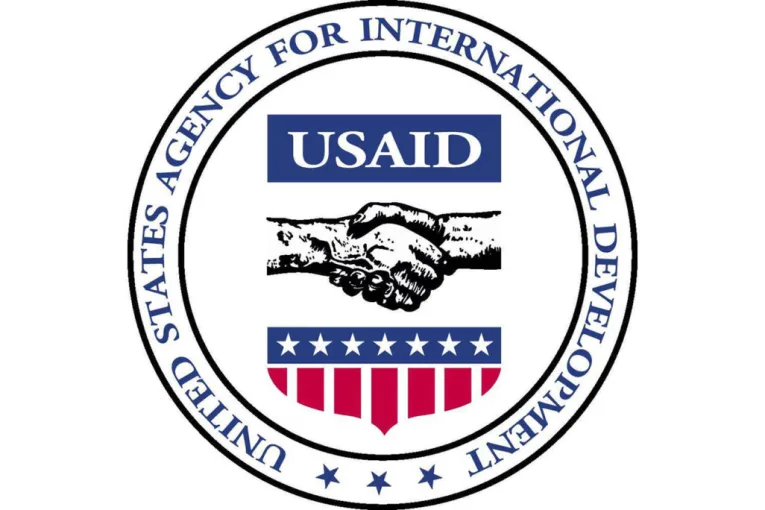
The abrupt closure of the U.S. Agency for International Development (USAID) under the Trump administration marks a seismic shift in both domestic agricultural economics and international humanitarian efforts. For decades, USAID has been a linchpin in providing foreign aid while simultaneously supporting Midwest farmers by purchasing surplus crops. Its closure not only halts a vital lifeline for food-insecure countries but also threatens the economic stability of American farmers who have relied on these transactions.
USAID, through its Food for Peace program, has historically acted as a safety net for U.S. farmers. By purchasing excess produce, the program helped stabilize prices and provided a guaranteed market for crops such as sorghum, wheat, and peas. This relationship has been particularly significant for farmers in Minnesota, Iowa, and Wisconsin, where agribusiness giants like Cargill and CHS Inc. have been major suppliers. In 2024 alone, USAID purchased $2 billion in U.S.-grown crops, a substantial portion of which came from the Midwest.
The decision to dismantle USAID and freeze its funding has left the agricultural community in disarray. With $70 million worth of commodities from Minnesota vendors alone at stake, the economic impact on farmers is immediate and severe. The ripple effects extend beyond individual farmers to entire rural economies that depend on these trade relationships. As Keeff Felty, president of the National Association of Wheat Growers, highlighted during a Senate hearing, over 200,000 metric tons of wheat, valued at $65 million, are currently in limbo due to halted purchases.
Moreover, the halt in USAID operations poses a significant risk to food security in vulnerable regions like Somalia, Ukraine, and Venezuela. These nations have relied on American food aid to combat hunger and malnutrition, with USAID often being the crucial provider in times of crisis. The cessation of these programs risks exacerbating humanitarian crises, leaving millions without access to essential food supplies.
This decision has not gone unnoticed on Capitol Hill. Lawmakers, including Sen. Amy Klobuchar and U.S. Rep. Angie Craig, have voiced strong opposition, emphasizing the detrimental effects on rural economies and the erosion of America’s role as a global leader in humanitarian aid. The closure of USAID not only diminishes the U.S.’s soft power but also undermines decades of bipartisan support for international food aid programs.
While the administration’s plan to transition USAID into the State Department is still in flux and requires Congressional approval, this move signals a shift in how foreign aid is perceived and prioritized. The impact on international relations and domestic agriculture cannot be overstated. It raises critical questions about America’s commitment to global humanitarian efforts and the support it provides to its own farmers.
The current scenario also highlights the fragility of relying on federal programs for market stability. As Nicole Atchison of Puris Holdings noted, while USAID is not the entire market, its absence leaves a considerable void. The agricultural sector must now pivot and explore alternative markets to ensure resilience against such policy shifts in the future.
As the debate continues, it is imperative for policymakers to consider the broader implications of shuttering USAID. The program’s history, rooted in Cold War-era initiatives, has consistently supported both American farmers and global food security. Its dismantling threatens to unravel these achievements, making the need for a thoughtful, bipartisan solution more urgent than ever.
In conclusion, the closure of USAID is a cautionary tale of how interconnected domestic policy decisions are with global outcomes. The administration must tread carefully, balancing efficiency with empathy, to ensure that the U.S. remains a beacon of hope both at home and abroad. The future of American agriculture and global humanitarian efforts hangs in the balance.
USAID is rife with corruption and high overhead to the point where often times only 10 to 13% of the funds actually make it to the recipients. So why all of the uproar over trying to make sure taxpayer money isn’t wasted?
“Rubio pointed out that in some cases, 10-12-13%, and “maybe less”, of USAID money actually reached the recipient, while the rest went to overheads and bureaucracy.”
“This isn’t my money. This is taxpayer money. So, we’re not going to eliminate foreign aid. We’re going to have foreign aid that makes sense. We’re going to have foreign aid that works”
Ran this through the fact checker…
Secretary of State Marco Rubio has claimed that in some cases, only 10-13% of USAID funds reach the intended recipients, with the remainder consumed by overhead and bureaucracy. He stated, “This isn’t my money. This is taxpayer money.” 
However, specific data supporting this claim has not been provided. The efficiency of USAID’s fund distribution can vary depending on the program and region, but attributing such a low percentage universally lacks substantiation. It’s important to note that administrative costs are a necessary component of implementing international aid programs, ensuring proper management, oversight, and evaluation.
In recent developments, the Trump administration has initiated significant reductions in USAID’s operations, citing concerns over spending inefficiencies. This move has led to widespread layoffs and disruptions in various international aid programs. 
Critics argue that these actions may undermine decades of U.S. goodwill and have detrimental impacts on global humanitarian efforts. 
In summary, while concerns about the efficiency of aid distribution are valid, the specific claim that only 10-13% of USAID funds reach recipients is not substantiated by available evidence.
You do know this isn’t the first time that abolishing or downsizing USAID has been proposed. Clinton proposed the same thing.
“In fact, it was first proposed by a Democrat — Secretary of State Warren Christopher — who tried to close the foreign aid agency during the Clinton administration.
In 1995, Christopher proposed a plan to eliminate three independent foreign policy agencies — USAID, the U.S. Information Agency (USIA), the Arms Control and Disarmament Agency (ACDA) — and merge them into a “super State Department.”
https://www.washingtonpost.com/opinions/2025/02/06/usaid-trump-musk-state-department-warren-christopher/